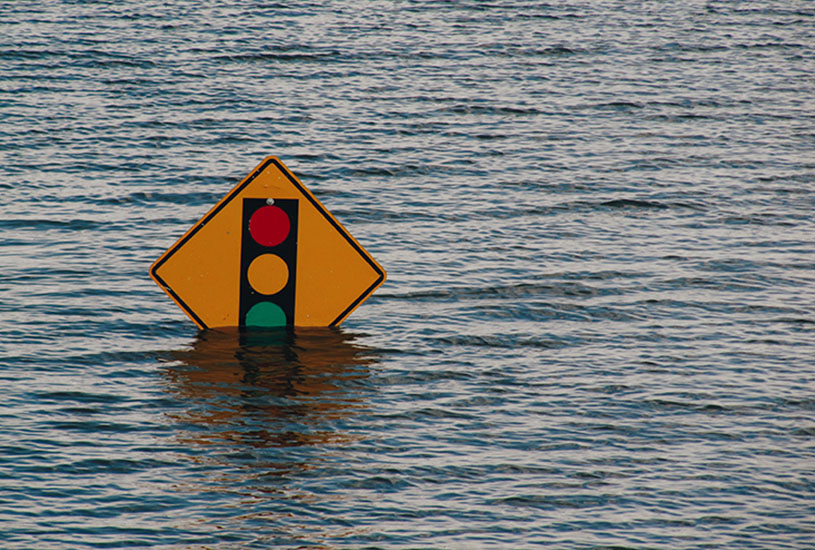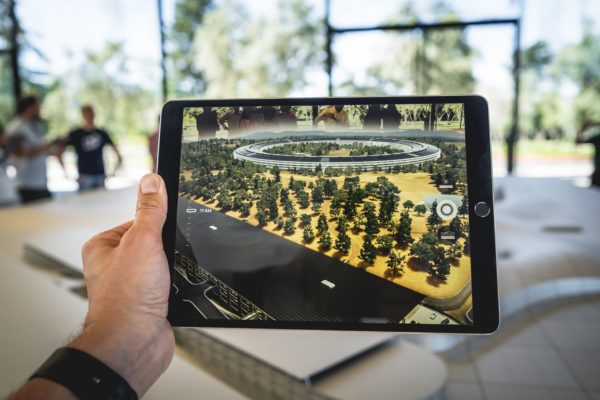With dangerous waters surging in, levees might not be the best flood control after all.
In the height of summer in 1974, Brisbane became an underwater city.
The devastating floods consumed streets, communities, and integral natural ecosystems.
More than 40 years on, these waters are becoming more difficult to navigate under climate change, especially in regional areas, but Deakin researchers are exploring a colourful solution; blue green infrastructure.

What’s a natural way to build?
Blue green infrastructure (BGI) is focused around an interconnected network of natural and designed landscape components, including water bodies and green open spaces.
Multi-functional in nature, these systems can be used in water storage for irrigation and industry use; flood control and finally, as wetland areas for wildlife.
Dr Zahra Ghofrani, a PhD graduate from Deakin University’s Centre for Regional and Rural Futures explains, “flooding and other extreme events will become more prevalent under climate change, and only sustainable approaches such as blue green infrastructure (BGI) will save us from ourselves.”
It requires us to shift our perspective around floods. To view them as a natural occurence which has the ability not to destroy, but work with our infrastructure.

So long as we create paths for the water to explore, as opposed to barriers.
“A blue-green infrastructure system can mitigate flood risk and also deliver benefits to socio-economic, infrastructure and environmental systems.”
“It provides a proven sustainable underpinning for development that protects against floods while also supporting biodiversity, agriculture and recreational use of water sources,” Dr Ghofrani says.
From settlement planning to now
The orgins of disaster management extend back to non-Indigenious settlement. A period when enviromentally inspired structures, like blue green infasatructure, were yet to plant their roots.
“Early settlers chose riverine areas within productive deltas on which to establish farms and late, towns.
“A lack of knowledge about Australia’s climate, (particularly climate variability) meant that farms were often located in highly flood-prone locations,” Dr Ghofrani says.
This contributed to the floods of 1810 of the Hawkesbury and Nepean rivers in New South Wales, prompting the establishment of towns nearby on higher ground.
But, many flood-affected farmers refused to move and Governor Lachlan Macquarie lamented “…they are deaf to all my remonstrances, and I fear they never will be prevailed on to move from their favorite spots and miserable cottages on the banks of these rivers.”
These events prompted solutions like levees to combat the extreme weather and to allow people to live in affected spaces including rural areas.

From uncertain, ill-informed beginnings to current extreme weather events, these rural levees are not sufficient enough and require a solution.
“The design and construction of rural levees have been ad hoc and maintenance has been inconsistent or non-existent, so right now the level of protection in many rural areas from flooding is inadequate,” Dr Ghofrani says.
Although, Dr Ghofrani assures that these communities may have the capacity to contend with high-water levels and flooding in remote areas, as long as the solution is “designed to deal with more extreme events as per climate change projections.”
Making blue-green infrastructure an invaluable resource for flood affected communities on a multi-generational scale.
Multi-functional designs positive impact
Globally, there has been an interest in collaborating with the natural world to create environmentally thoughtful change.
Dr Ghofrani explained this way of thinking moves away from traditional levee building and upgrading and instead, as inspired by the Dutch approach, looks to create ‘room from the river’.
“In addition to mitigating floods, it [BGI] can be used to create new biodiversity corridors, rehabilitate wetlands and double as recreational reserves for communities, among other functions.
“By contrast, a dam is just a dam,” Dr Ghofrani says.
By giving our natural ecosystems space through environmentally aware infrastructure, we can realise its potential to do more.
From enhancing flood protection to cleaning polluted water, the legacy of our planet can thrive under blue-green infrastructure.

Going beyond structural design this research can even help flood-response agencies to identify at-risk locations of rainfall-runoff to improve the coordination of their rescues.
“It is expected that the research will provide the basis for environmental managers to consider the full range of flood mitigation options, including BGI components, to better formulate regional flood management policies.”
“The results [of this research] will improve our understanding of the potential consequences of flooding under climate change, and therefore allow the delivery of solutions that are both practical and innovative,” Dr Ghofrani says.
With researchers at the forefront, we can wade through the devastating legacies of floods across Australia and submerge ourselves in the future of flood control.



